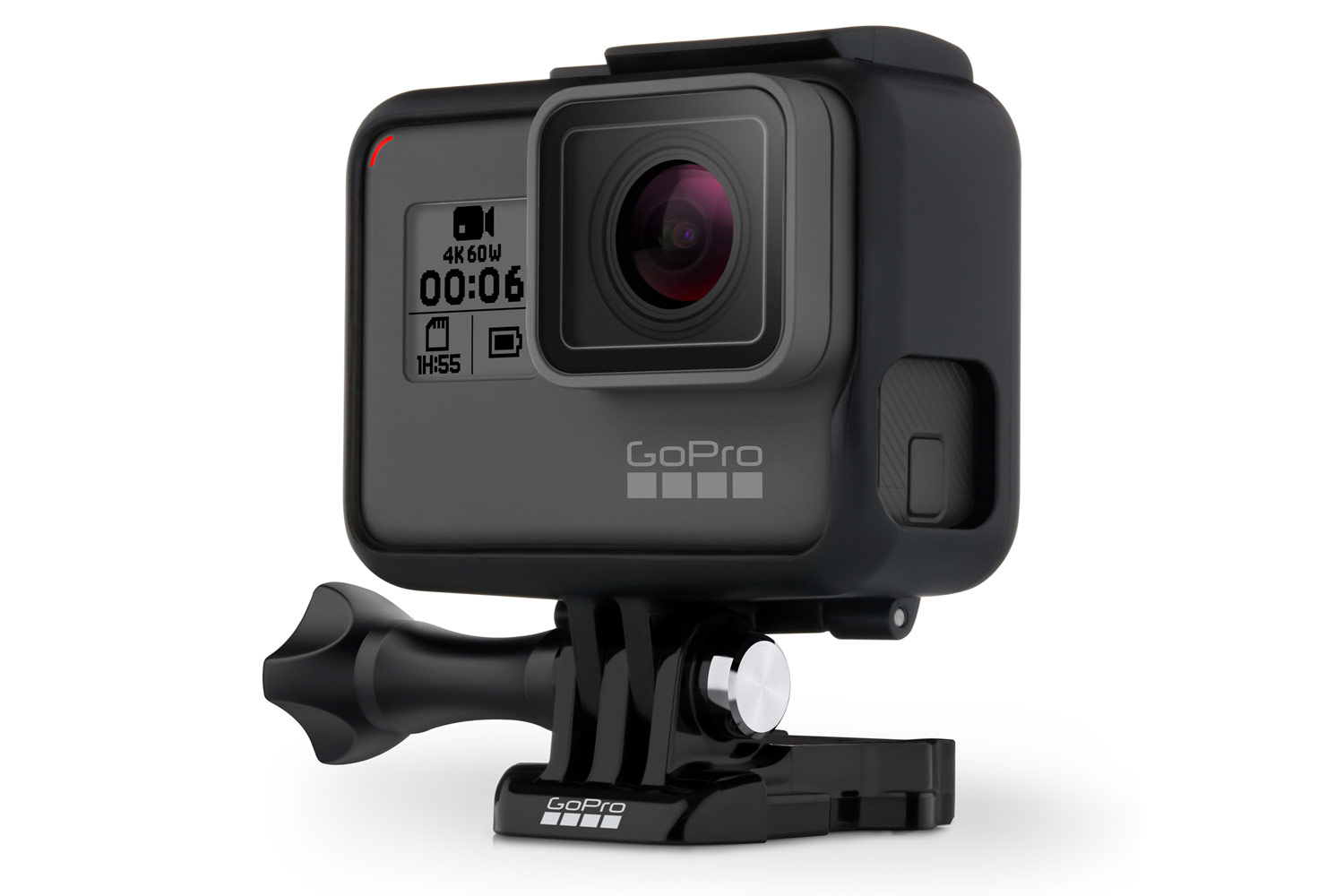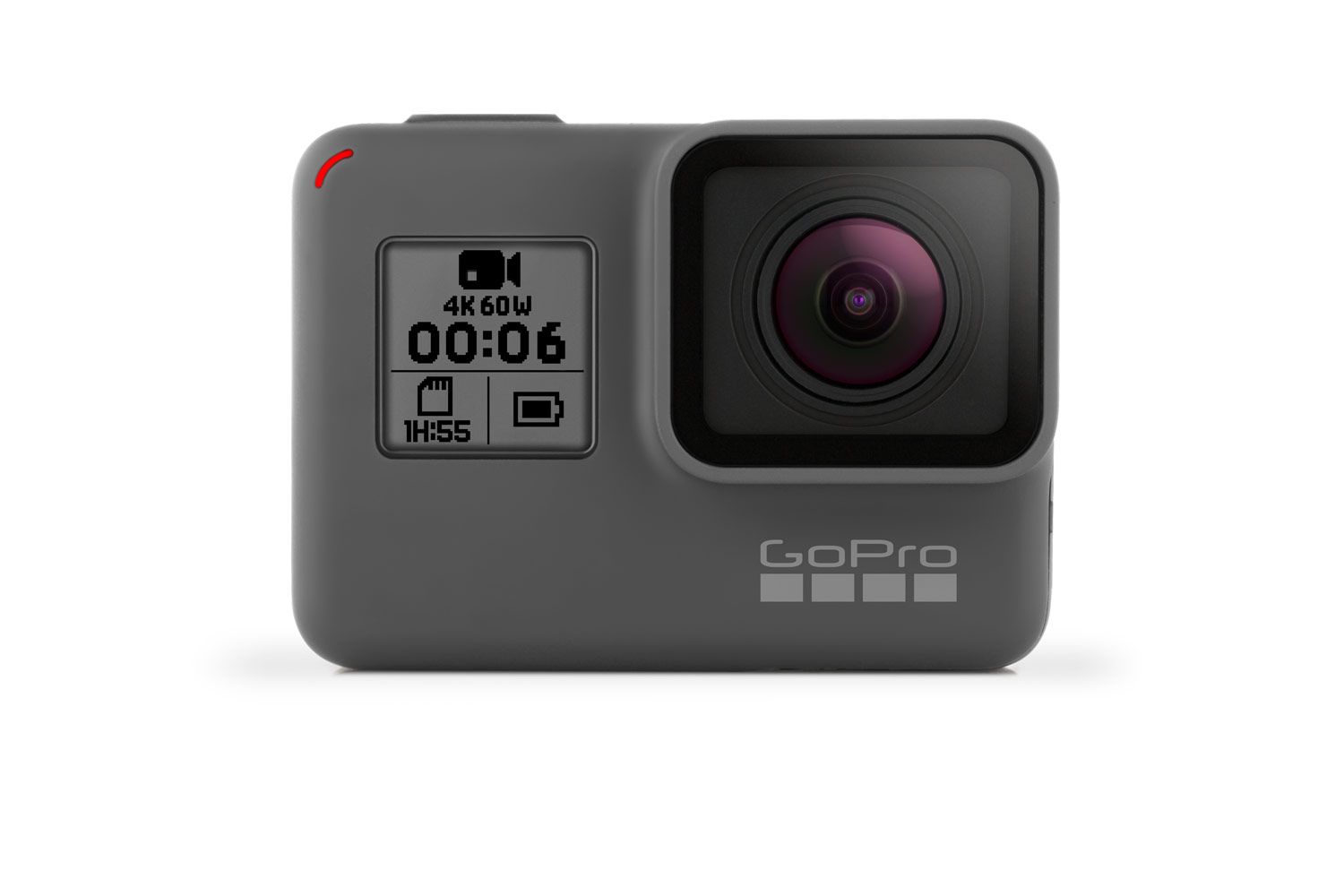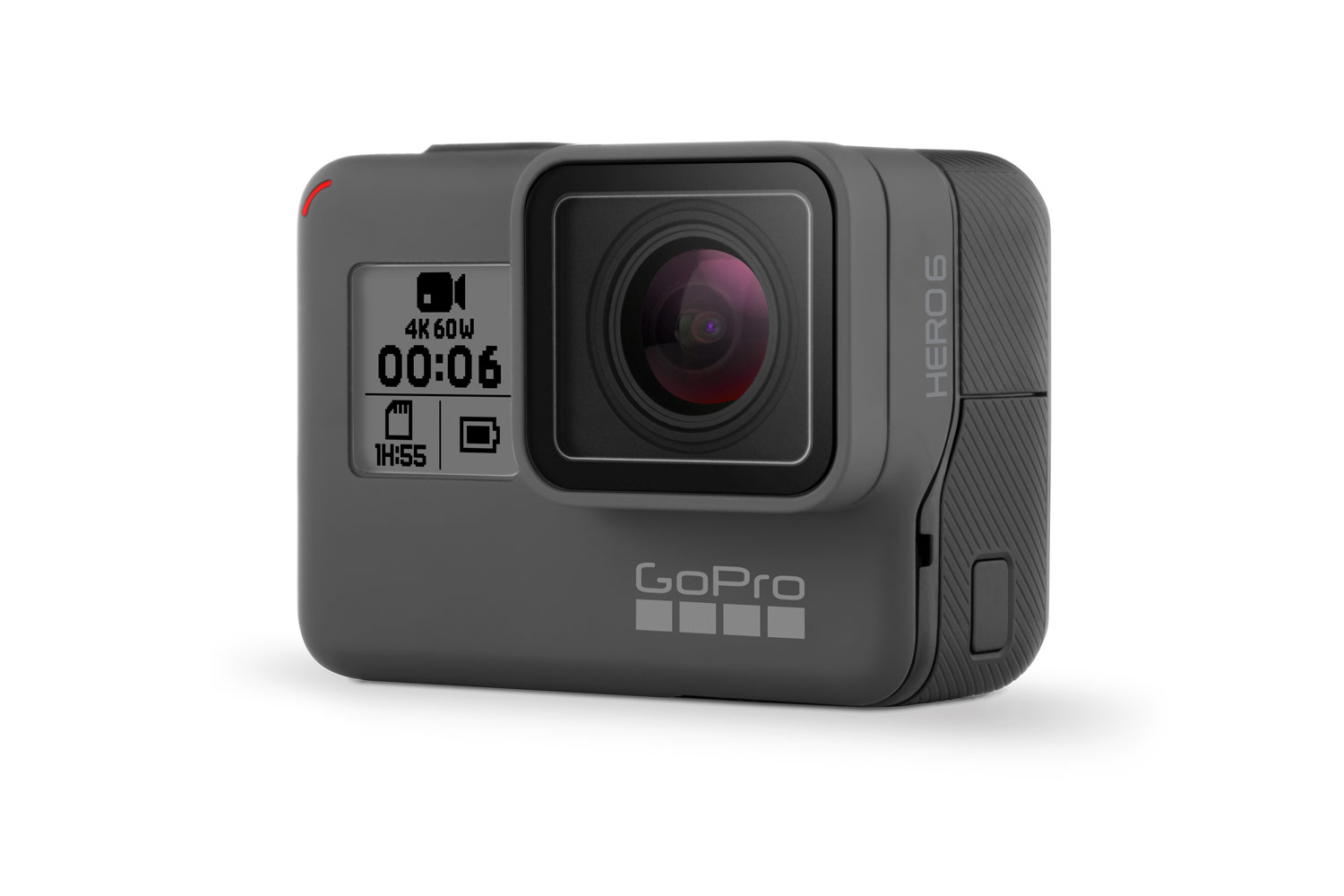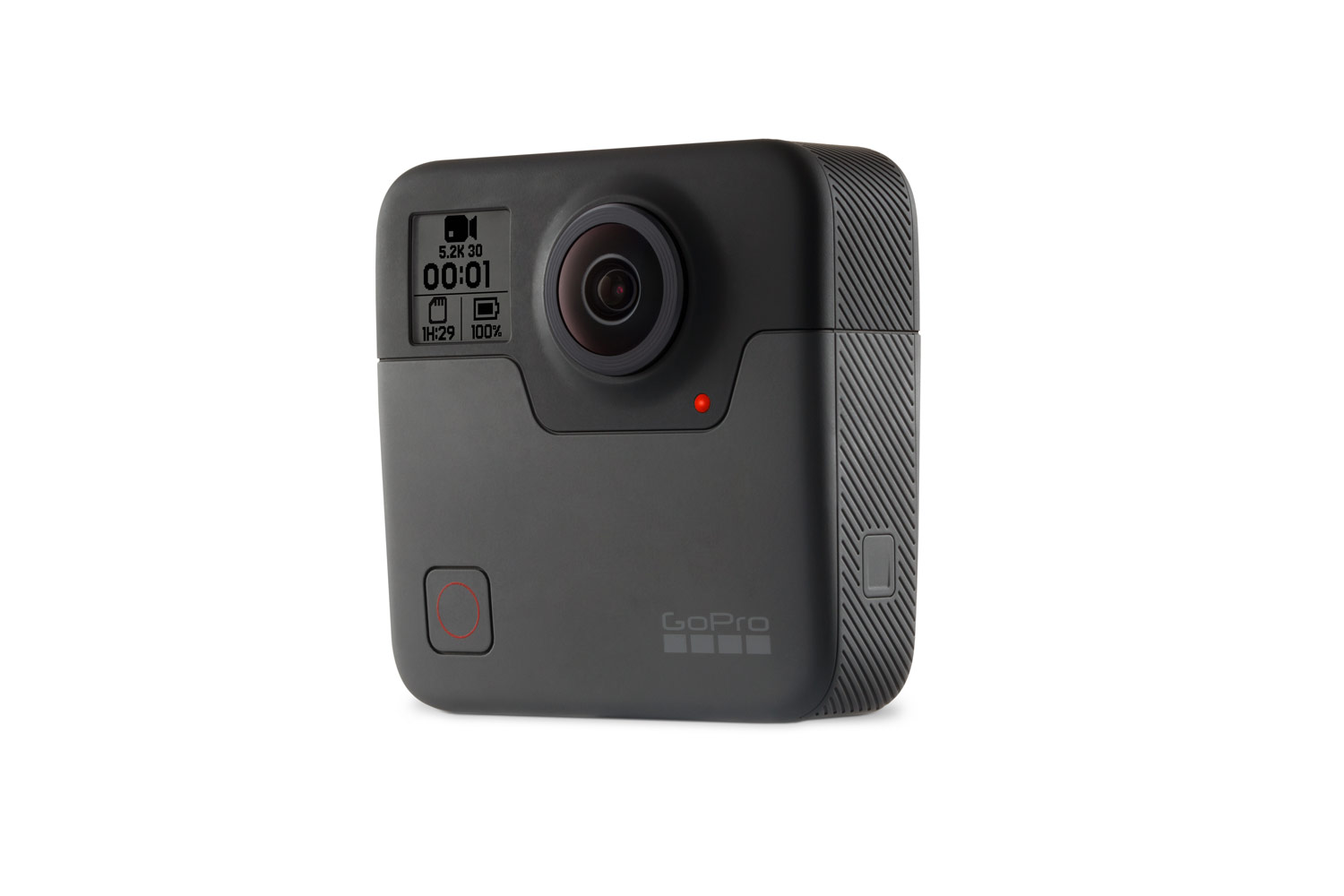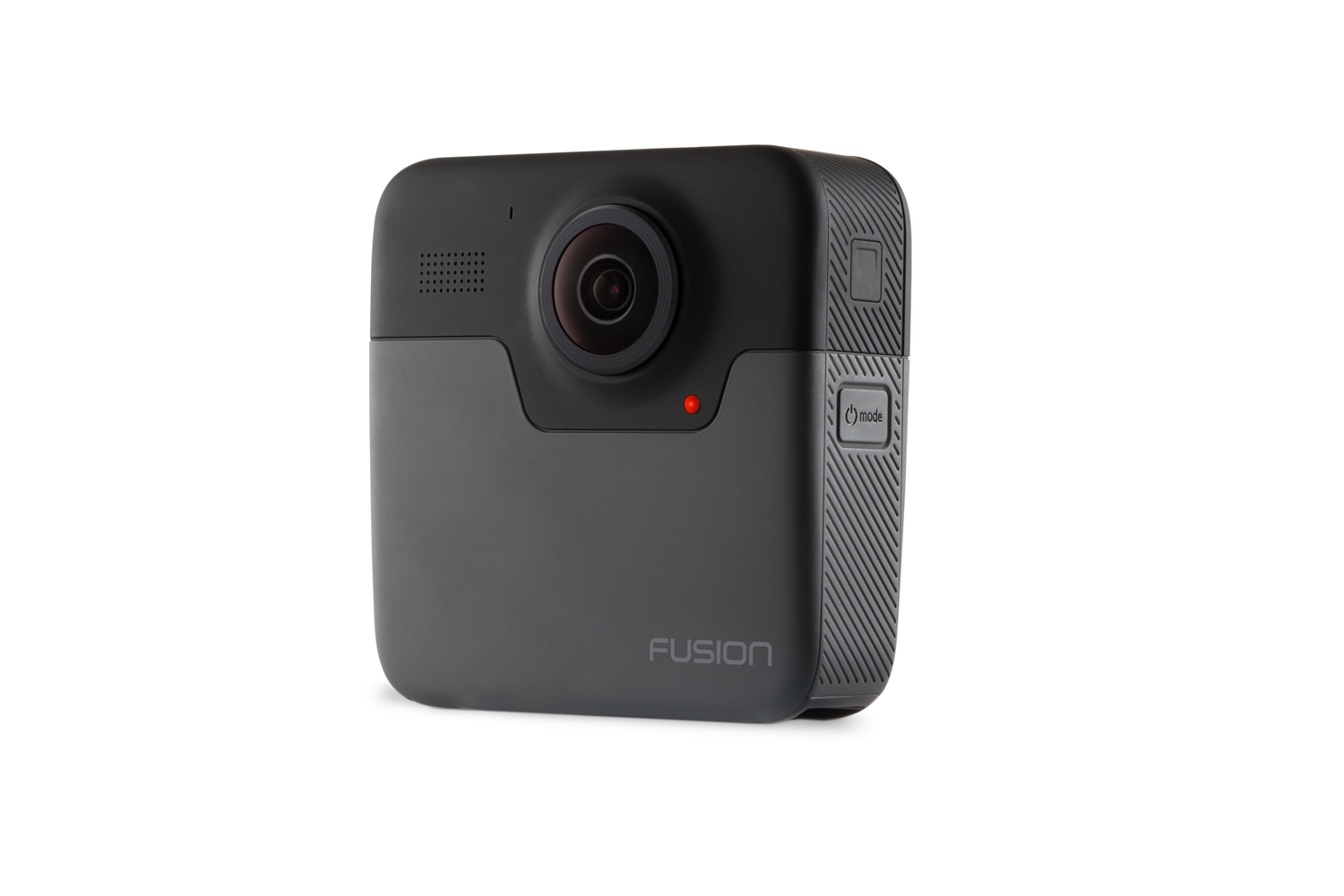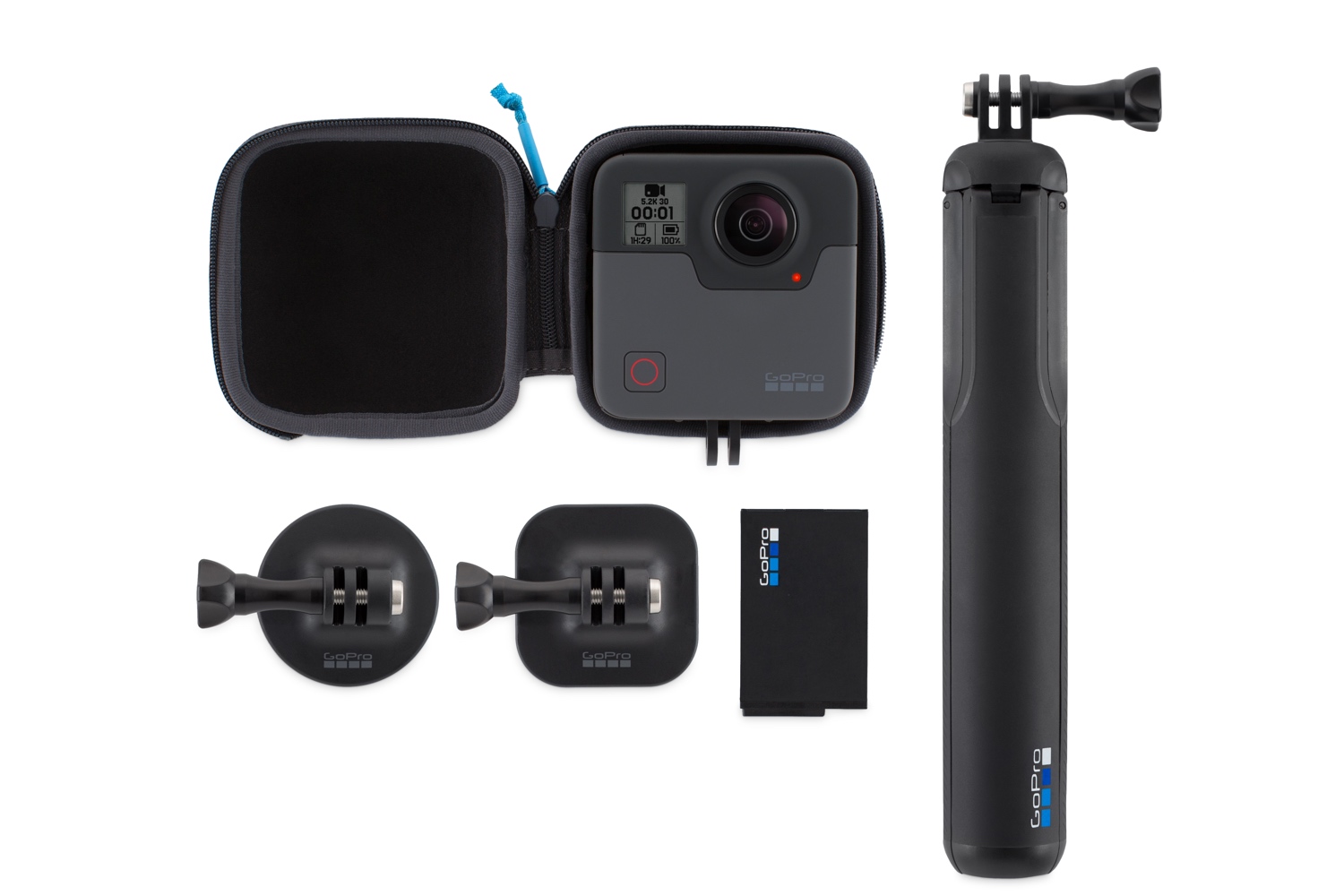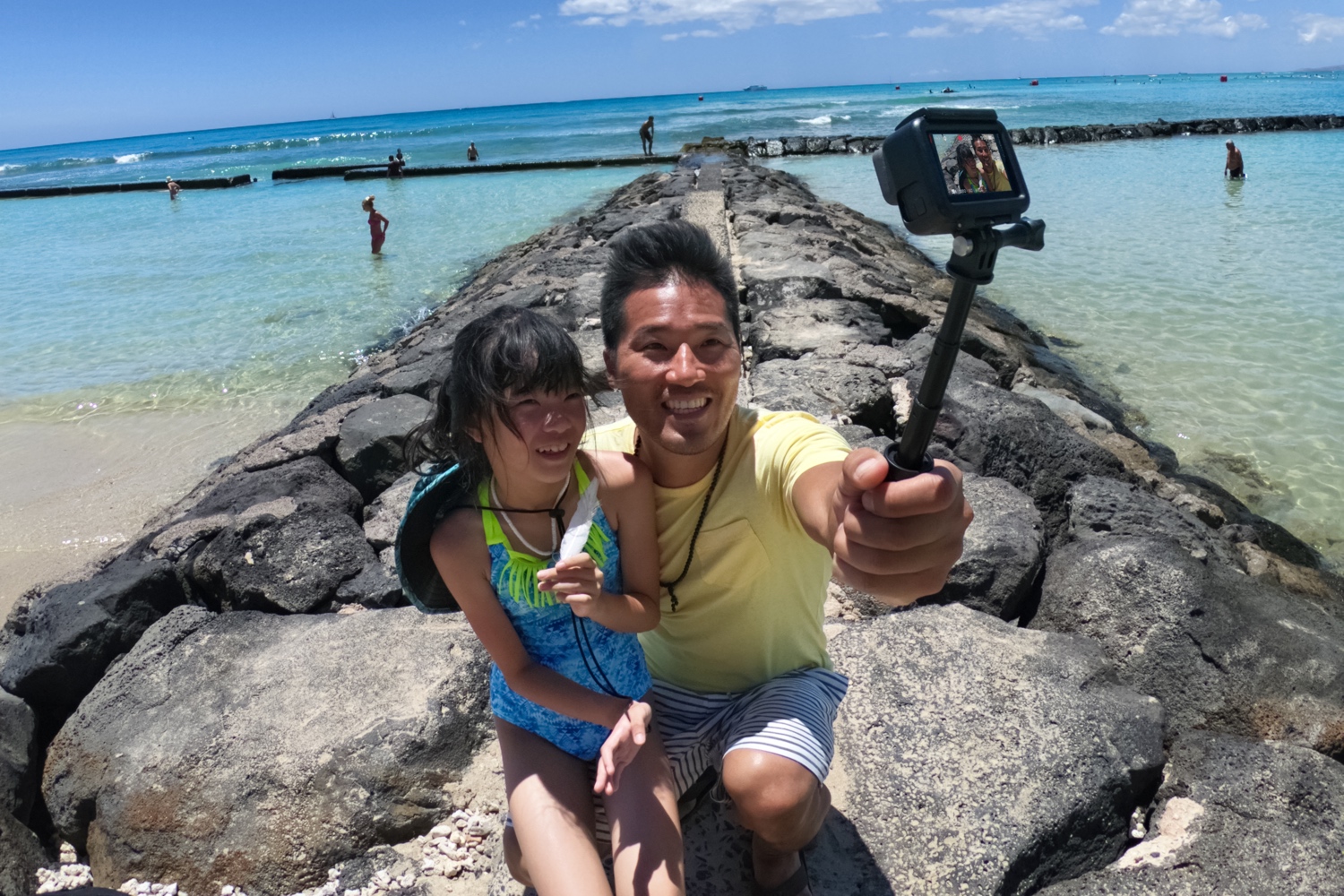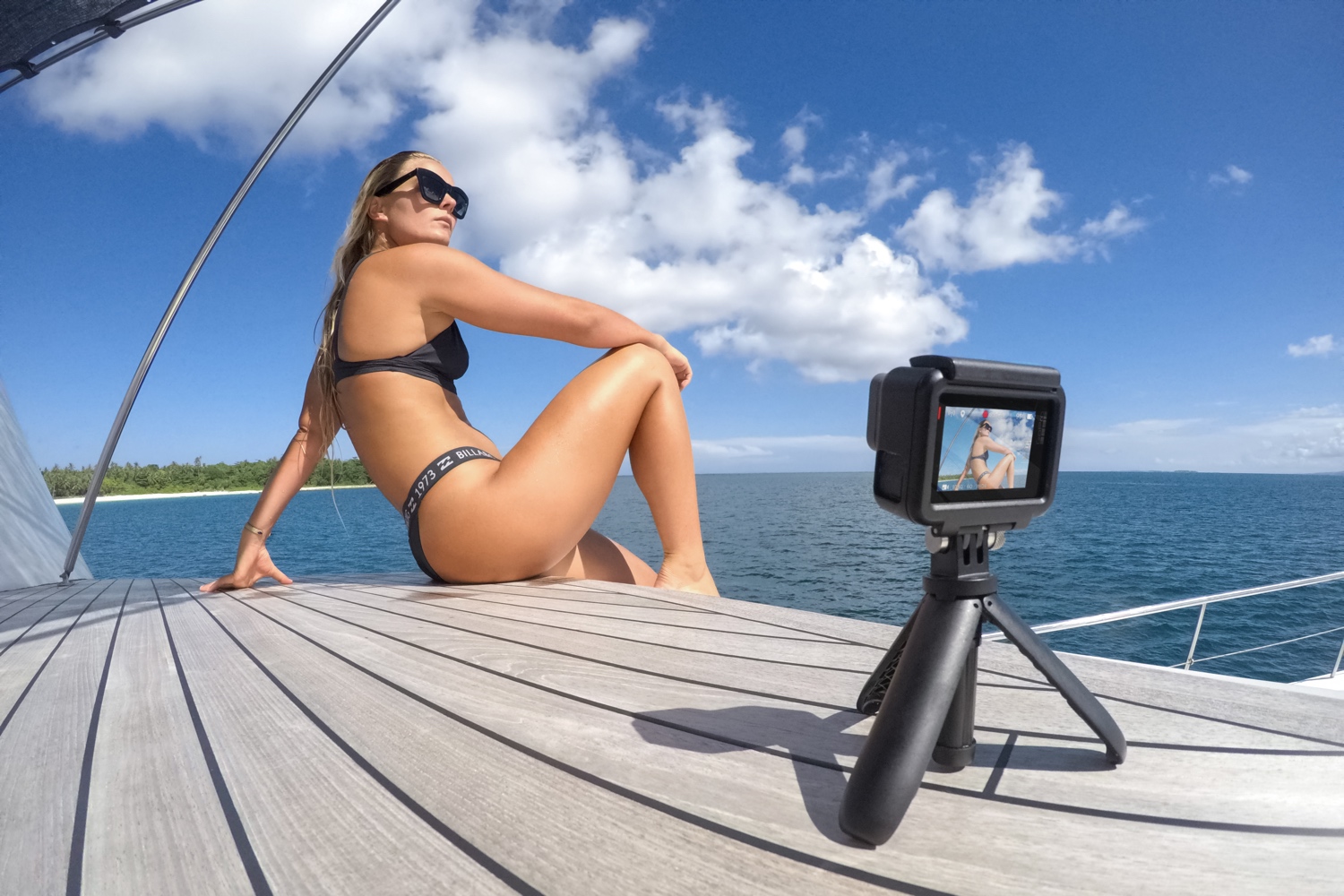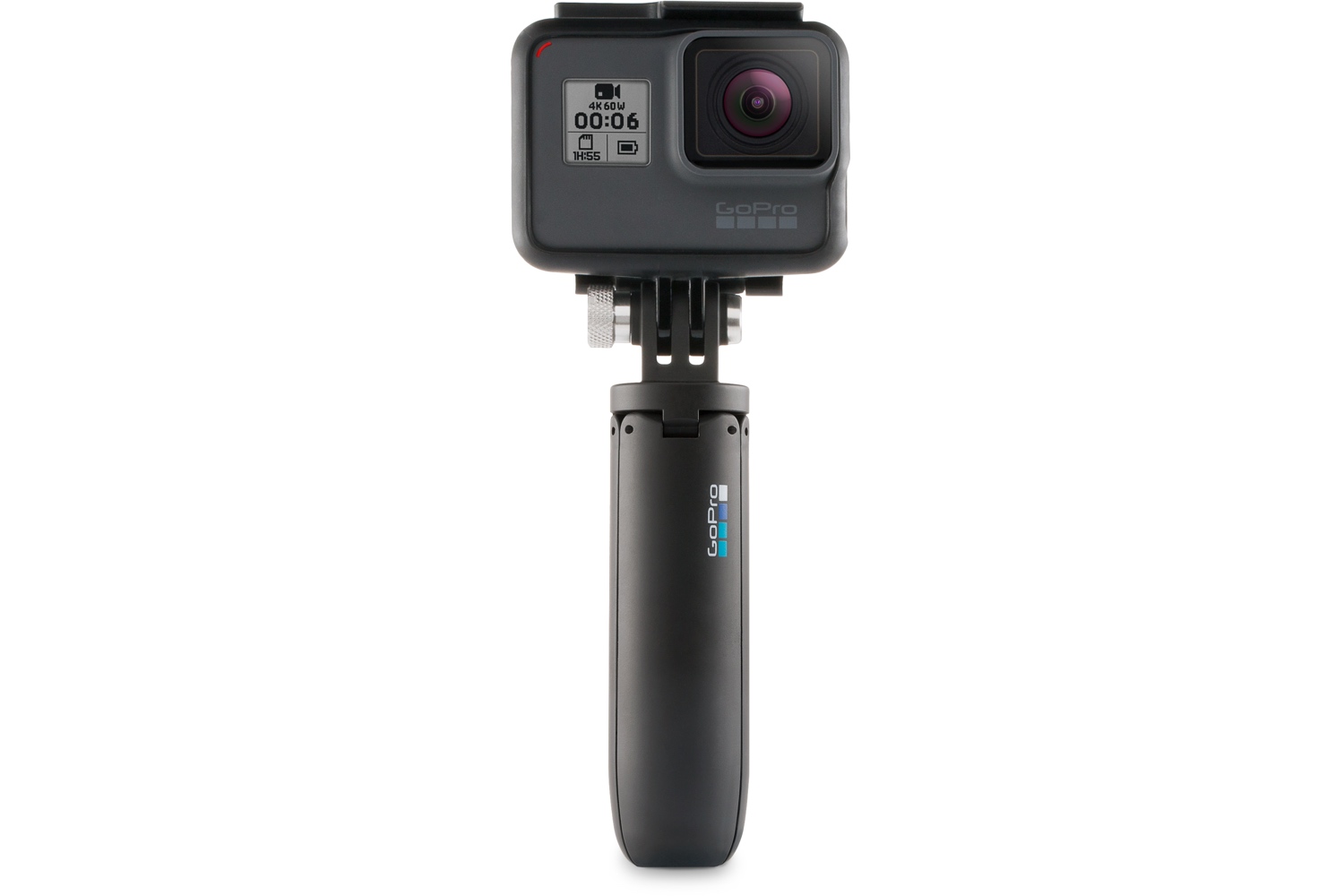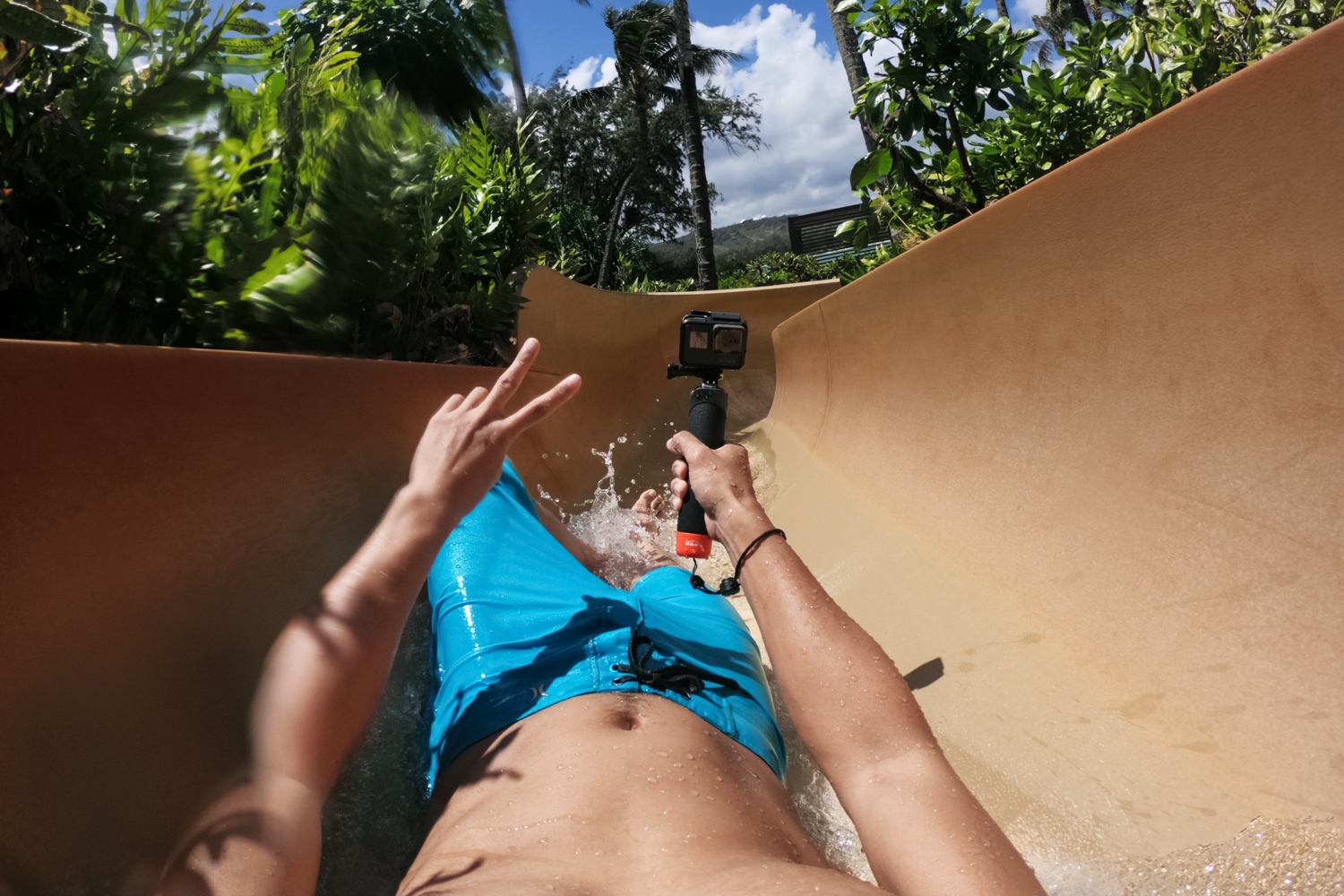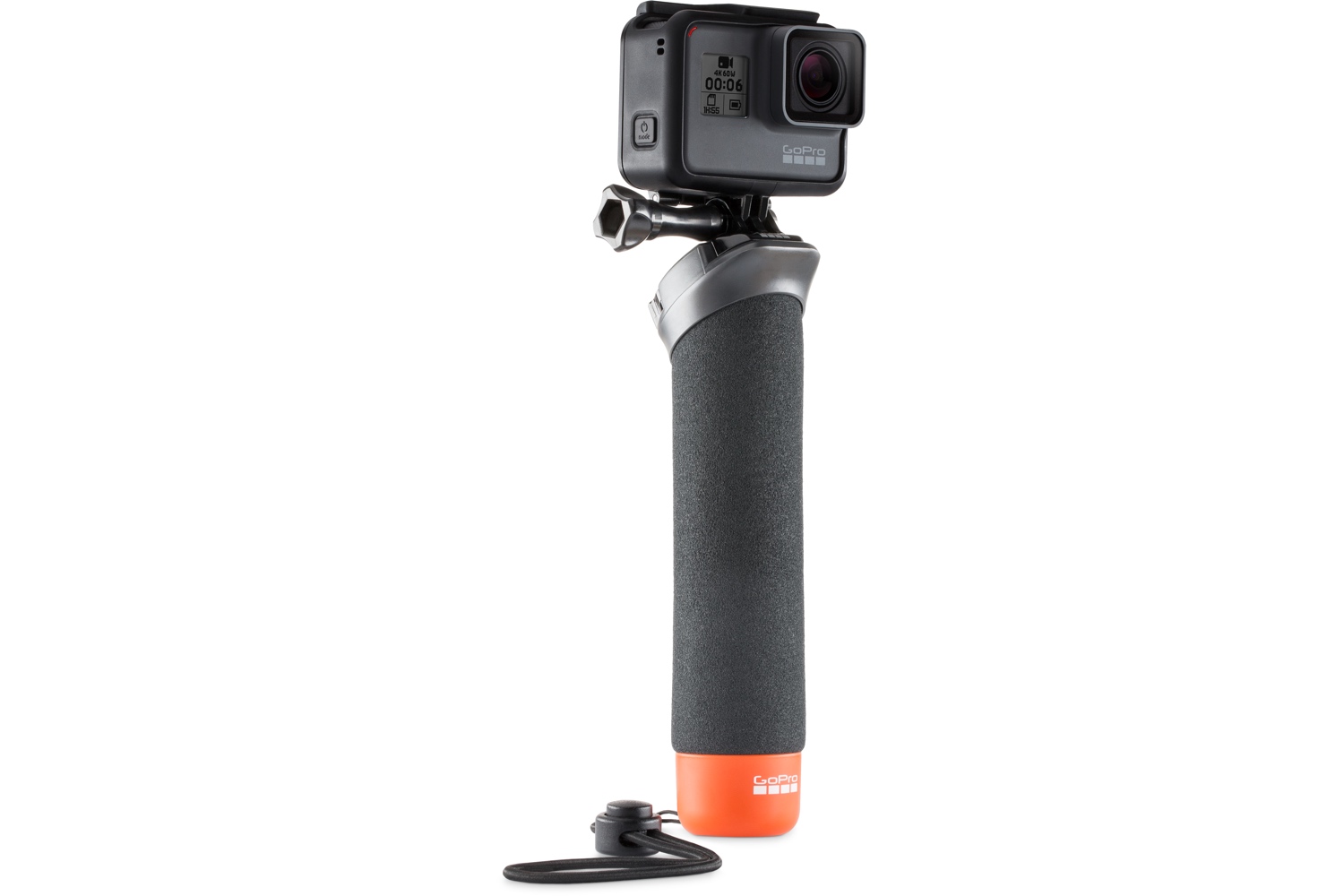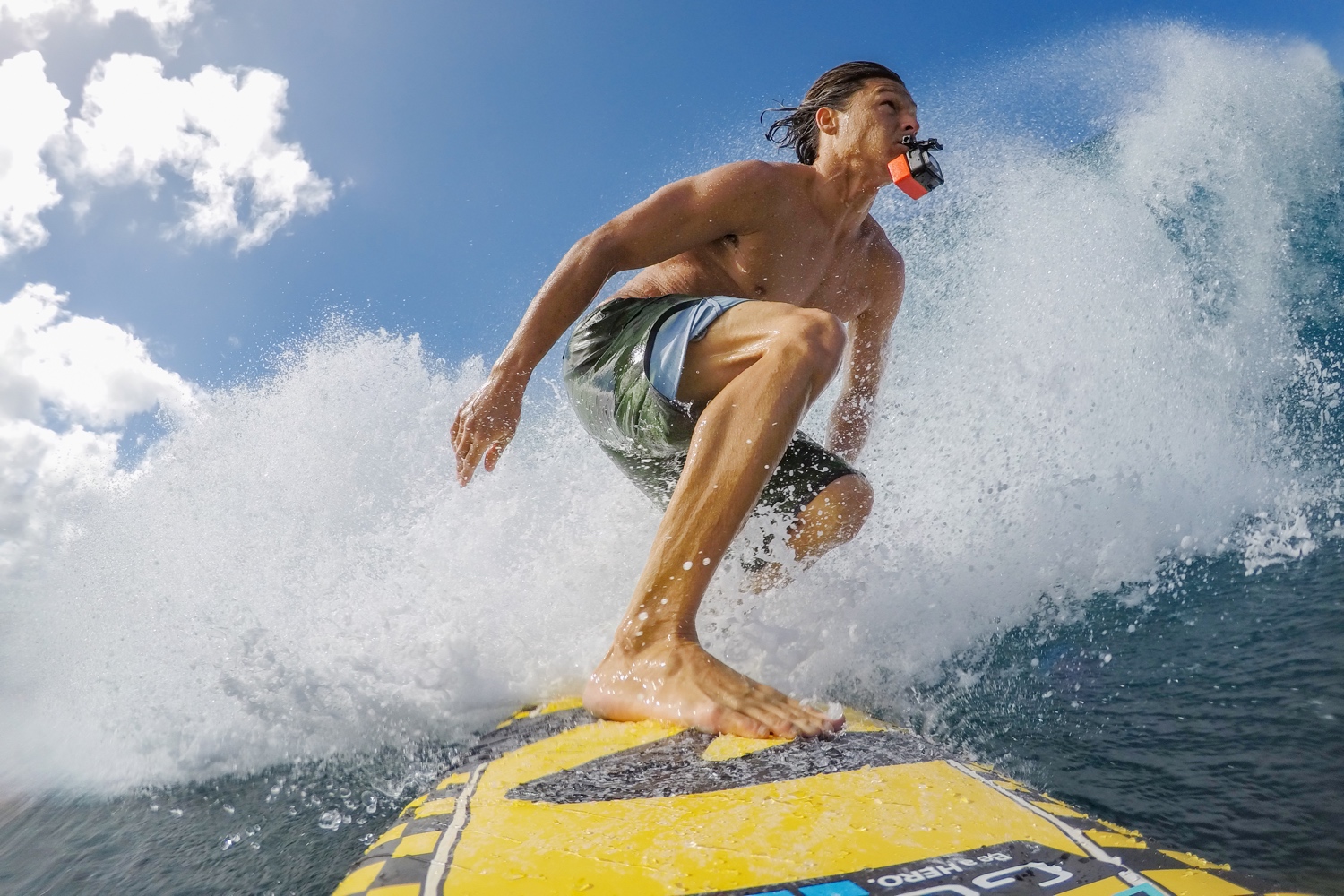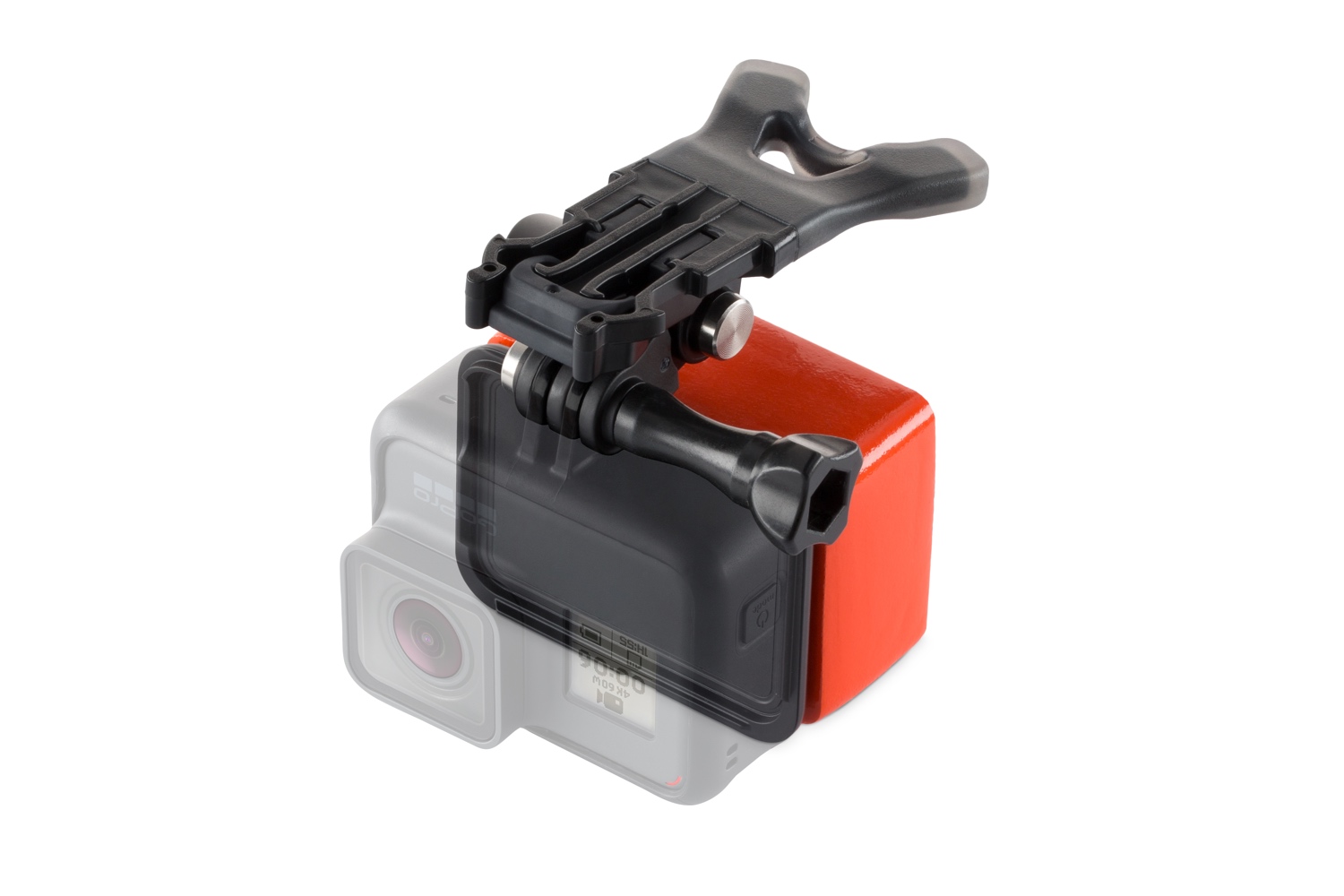GoPro unveiled the new Hero6 Black camera on Thursday, September 28, holding true to its promise of returning to yearly camera refreshes. Looking essentially identical to the Hero5 Black, the headline feature of the Hero6 is support for 4K video at 60 frames per second, doubling the 4K framerate over the Hero5 and, critically, catching up to competitor Yi who introduced the 4K/60p-capable 4K+ camera earlier this year. It will also handle slow motion at Full HD 1080 at 240p.
But that isn’t the only new feature that is found its way into GoPro’s new flagship action cam. The company is also touting improved performance across the board, mostly thanks to the new custom-designed GP1 processor. While GoPro didn’t publish any hard numbers, it claims dynamic range is significantly improved and that it has the most advanced stabilization of any Hero camera. GoPro says the Hero6’s stabilization offers similar quality to Karma’s system while being built into the camera body. The camera should also do better in low light.
“Hero6 is the very best of everything GoPro,” CEO Nick Woodman said during the launch event in San Fransisco. “We took the world’s most durable camera and gave it the most advanced stabilization ever found in a GoPro, with 4K 60 fps and 1080 240p, expanded dynamic range and low-light performance, and better Wi-Fi for three times faster transfer.”
Beyond image quality, the Hero6 Black looks to improve the user experience with a new digital zoom that can be activated through the touchscreen. It also offers 5Ghz Wi-Fi for transfer times up to three times faster, which, combined with the QuikStories feature in the GoPro mobile app, will make it easier than ever to get your adventure posted online in as little time as possible. In our review of the latest version of Quik with QuikStories, we found transfer speeds can be pokey with longer clips, so the faster speeds should improve the experience while, we presume, also saving battery life.
GoPro also claims that the GP1 processor will help produce even better QuickStories thanks to computer vision and improved sensor analysis, which help it determine the most exciting parts of a video. Woodman says the Hero6 is the company’s smartest camera yet with enhanced hardware and algorithms that improve how that QuikStories app automatically creates the video. Algorithms for facial recognition and audio have improved while on the hardware side the GPS and accelerometer help the software pick the peak moments.
Like the Hero5 Black — which we named the best action camera you can buy — the Hero6 Black will be waterproof without the need for a housing. The camera also expands the number of available voice controls that launched with the Hero5. Data and battery recharge are handled over USB-C, and it will work with existing GoPro mounts. The camera is available now for a price of $499.
GoPro goes 360 with Fusion
GoPro also shared details of its Fusion 360 camera, a product that has been in development for some time now. GoPro publicly tested the camera with several high-profile production houses earlier this year, but now we finally know what it is inside the camera, and what it can do.
The Fusion will shoot 5.2K spherical (360 x 360 degrees) video with advanced “gimbal-like” stabilization. Overcapture, which was detailed previously, will allow users to output to standard fixed-frame video with full control over camera angle and field of view (Garmin recently introduced a similar feature for its VIRB 360 cam). With Overcapture, GoPro expands the ability for users to record their own adventures by allowing for techniques like panning through editing instead of actually moving the camera. Mounting the Fusion in one central location, Overcapture allows users to go back in and create a video that follows the motion on a standard-sized screen.
“This is ultimately where cameras are headed — you shouldn’t have to point at what you want to film, you should just be able to film what’s happening and Fusion makes that possible,” Woodman said.
Fusion can also capture 18-megapixel spherical still images, has time-lapse and burst photo modes, is waterproof to 16 feet (compared to 33 feet for the Hero6 Black), and has a built-in GPS, accelerometer, gyroscope, and compass for data logging and overlays. Like the recent Hero cameras, there is voice control, which we find works well in the Hero cameras, so we expect the same from the Fusion.
The Fusion will also capture 360-degree audio. If it is similar to the new Ricoh Theta V, then the ability to record spherical audio should allow for a more immersive experience when content is viewed through a headset.
GoPro also detailed the different viewing modes that will be available with Fusion. When mounted on an extension pole, the Fusion’s unique angle of view cuts out the actual pole and looks just like a cameraman was following a few feet from the action, a feature called “angel mode.” A preset called “pannoflow” creates an effect similar to placing a camera on a gimbal with a rotating timer — the Fusion shoots the video with pre-determined panning motion. The sample shared during the launch event showed a timelapse with a slow panning motion around the scene. The “little planet” view, a feature that is popular among 360 cameras, will also be available along with the more traditional scroll-around 360 view.
The Fusion will work with existing GoPro mounts, which is good news for existing GoPro owners, and there are lots of mount options to choose from. The camera will come with something called the Fusion Grip Mount; there are no specific details at time of posting, but we will update the story as we learn the information. Also unknown is whether it will work with the Karma Drone and Karma Grip in some fashion.
Pre-orders are open now with the Fusion expected to ship in November at a price of $699. The Overcapture features come at a later date with a free app update early in 2018, GoPro says.
No new drone, but Karma gets smarter
GoPro’s Karma drone got off to a rocky start when it launched last year. One recall later, the drone is back on sale and GoPro continues to improve it rather than try and replace it. It is fully compatible with the Hero6 Black.
A new firmware update, available now, introduces Follow and Watch modes. As the name suggests, Follow mode tells the drone to follow the Karma controller, while Watch mode pans to keep the controller in frame while the drone hovers. Users can also now set up to 10 waypoints in cable cam mode. Another update allows the gimbal to point upward, getting a shot of the sky without getting the Karma’s blades in the footage.
“Innovation on GoPro products does not stop after a product is launched, and that’s the case with Karma,” Woodman said.
By itself, the Karma drone costs $799 but users can opt to bundle it with a Hero6 Black for $1,199 for a savings of $100.
Additional new accessories include the Shorty, a pocket-friendly extension pole and tripod; the Handler, a floating handgrip with a quick-release mount; and the Bite Mount + Floaty. GoPro did not reveal any extra details on these products ahead of time.
We will update this article with additional details revealed at the show from GoPro’s launch event in San Francisco, as well as some initial impressions.
